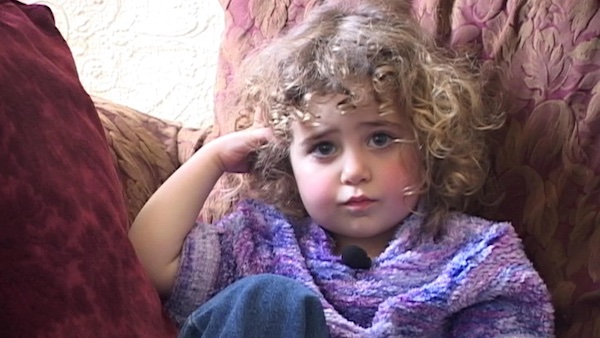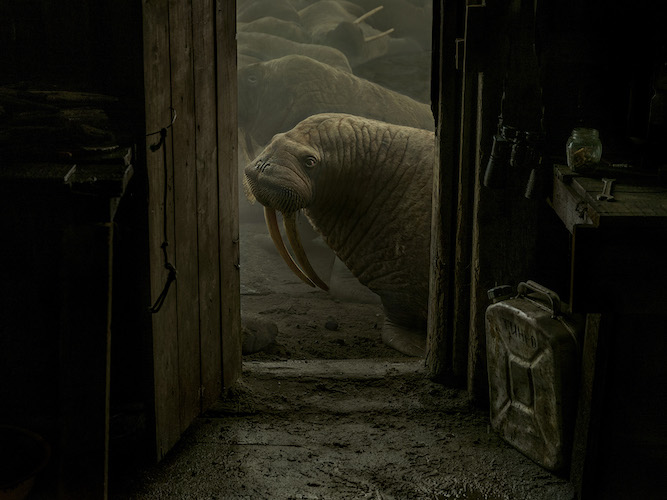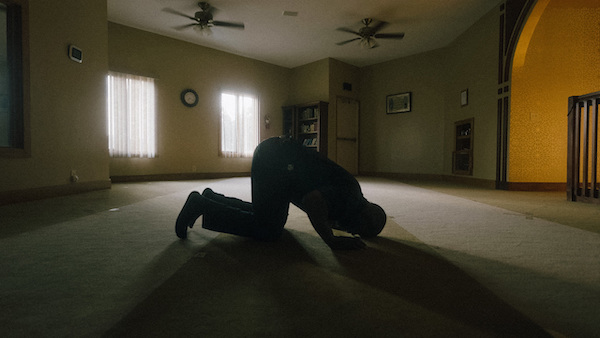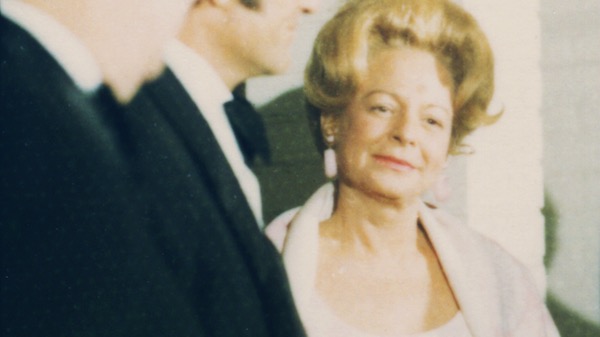Film Reviews: 2023 Oscar Nominated Short Films — Documentary
By Betsy Sherman
2023 Oscar Nominated Short Films: Documentary – Opening on February 24 at the Coolidge Corner Theatre, Brookline, the Kendall Square Cinema, Cambridge, and the Somerville Theatre.
Joining programs of animated and live-action fiction shorts on the big screen is the 2023 Oscar Nominated Short Films: Documentary showcase. The big night when the winners will be announced is Sunday, March 12. The five entries in this 165-minute session (each running around 30-40 minutes) are worthy contenders. Here’s a look at each of them.

A scene from How Do You Measure a Year?
The curiosity of a documentarian meets the pride of a parent in American filmmaker Jay Rosenblatt’s How Do You Measure a Year? Rosenblatt’s experiment was to film interviews with his daughter Ella as a birthday ritual from ages two to 18, asking the same questions each year — and not to look at the footage until after the last interview was filmed. The results have been edited into a 29-minute film that’s lovely and subtly revealing.
Questions include “What are you afraid of?,” “What are dreams?,” “How do you feel about our relationship?,” and “What is power?” (to which the three-year-old Ella gives a provocative answer, based on a misunderstanding). Inseparable from the girl’s physical changes are changes in confidence, self-esteem, relationship with the father filming her, and engagement with the world. Much of this information is conveyed in Ella’s body language and dress, as well as her words. At age seven, the Hannah Montana fan announces her ambition to be a singer, and song interpretations become a feature of the ritual (the movie’s title comes from a lyric in Rent). The preteen years find Ella comfortable in her own skin: on her 11th birthday, she answers “What would you tell your 25-year-old self?” with “I hope you still like you.” Abruptly, ages 13 and 14, during which she wears braces, are the sullen years (I can identify with that). Subsequent years show a rebound, with the older teen declaring “My knowledge gives me power.” Rosenblatt’s film raises an oft-asked question in the study of documentaries, whether a camera encourages a performance that might obscure “the truth” (whatever that is). In any case, it presents an intriguing look at a particular segment of American girlhood in the 21st century.

A scene from Haulout.
The British film Haulout, by Evgenia Arbugaeva and Maxim Arbugaev, takes a poker-faced approach to its human subject, marine biologist Maxim Chakilev, and the subjects of his study on a small island in the Siberian Arctic. The film has no narration or music, only natural sounds, and explanatory text appears at the end. It unfolds during the autumn of 2020. Chakilev abides in a weather-beaten hut, eating from cans, and waiting. I can’t avoid the spoiler here: it’s a heck of a surprise when he opens the door and a multitude of walruses appear on the verge of tumbling into the hut. The beach is filled with them, crammed so close together they’re climbing over each other. The sounds of wind and crashing waves are now joined by their moans and grunts. Haulout’s vigilance in recording the distress of a species that has been the object of ridicule — or maybe it’s just me, that I watched too much Tennessee Tuxedo as a kid — is transformative. The panicked, pitiable beasts gore each other with their tusks, and calves look likely to be crushed by their elders. The scientist estimates that he sees 95,000 walruses on land, and there are likely 6000 more in the water. Unlike in previous times, there’s no sea ice, on which they would have rested during their migration, so they’re exhausted. It’s another slice of life (and death) under human-made climate change. This is a meticulously honed film, and a hard one to forget.

A scene from The Elephant Whisperers.
By contrast, The Elephant Whisperers by Kartiki Gonsalves wears its heart on its sleeve, and that’s not a drawback. It too portrays animals and the changes forced upon them by human encroachment. The word love is spoken many times by its human subjects, Bomman and Bellie, members of the Kattunayakan tribal community who nurse orphaned baby elephants back to health at the Theppakadu Elephant Camp in Tamil Nadu, South India. As suggested by the title, they have a special ability to communicate with their charges. Yet they would underplay a notion that there’s a secret to it all. When we meet them they have opened their lives, and their hearts, to the young male elephant Raghu, cleaning and feeding him, playing with him, and teaching him, as far as they’re able, to become an adult (Raghu’s mother, who went into a village in search of food, was electrocuted). Raghu is later joined by a girl elephant, Ammu, who sports an outrageous shock of red hair. Bomman and Bellie’s skills go beyond touch; the two exude a force field of care for the forest and all its inhabitants. Filmmaker Gonsalves grew up in the area and dedicated five years to making The Elephant Whisperers, in part to publicize the plight of the endangered Asian elephant. Her movie, with its focus on beauty and healing, takes the viewer through a gamut of emotions. [Netflix]

A scene from Stranger at the Gate.
The powerful and moving Stranger at the Gate depicts another, not fundamentally different, force field of care. It was made by Joshua Seftel, a Tufts graduate who has an eclectic filmography, although some may only know him for his schticky-funny video chats with his mother. This short is an outgrowth of his documentary series Secret Lives of Muslims. It starts out rather cryptically, the camera trained on two families. Dana and Emily McKinney talk about moving to Muncie, Indiana, with the man who became Dana’s husband and Emily’s stepfather, the former Marine Richard “Mac” McKinney. Dr. Sabar Bahrami and his wife Bibi talk about leaving Afghanistan as refugees in the mid-’80s, meeting at a camp in Pakistan, and starting a new life in the US. They were involved in starting the Islamic Center of Muncie. Mac became the bridge between the two families via a series of events that took place at the center in 2009. It would be a shame to give away too much about this complicated and harrowing story; its backdrop includes the Islamophobia generated in the wake of the September 11 attacks and the so-called war on terror, untreated PTSD, and the strong sense of a threat to the American way of life. But this is also a story of courage borne of compassion. Seftel’s film is about the dehumanization that happens in war, and an instance of what can be called rehumanization.

A scene from The Martha Mitchell Effect.
In the late ’60s and early ’70s, you didn’t have to be politically aware to know who Martha Mitchell was. The wife of Richard Nixon’s Attorney General (and campaign manager) John Mitchell was in newspapers and magazines and on TV talk shows. A caricature of Southern womanhood, with big hair, colorful outfits, an Arkansas accent, and a hearty laugh, she became a comical thorn in the side of the administration by speaking her mind, often in phone calls to reporters and even to the president himself (the phone became her emblem, and she cameo’d on Laugh-In with Lily Tomlin’s telephone operator character).
But, as has come out in the decades since her death, Martha was no joke. As chronicled in The Martha Mitchell Effect by Anne Alvergue and Debra McClutchy, the woman known as “the Cassandra of Watergate” was instrumental in Nixon’s eventual resignation. To make their case, the filmmakers draw on a wealth of archival footage, peppered with clips from the Nixon tapes (unfortunately not subtitled), as well as new remarks by journalists (Connie Chung, Sally Quinn, and Bob Woodward) and members of the administration (John Dean and Dwight Chapin). The pivotal event was when Martha was sent to California in June of 1972 to campaign on behalf of the Committee to Re-Elect the President (CREEP). The fact that the Watergate break-in happened while she was away from DC was not coincidental. Martha would surely smell a rat. To make sure she didn’t call her friends in the press, she was detained by bodyguards in a hotel room and forcibly tranquilized. She called herself “a political prisoner,” to the skepticism of most. Sadly, it was a deliberate part of Nixon and Mitchell’s dirty tricks scheme to brand Martha as mentally ill. Even Watergate junkies will learn something new from this riveting documentary, which barrels forward irrepressibly, just like its subject. Here’s how Wikipedia defines the effect named in the film’s title: “The Martha Mitchell effect occurs when a medical professional labels a patient’s accurate perception of real events as delusional, resulting in misdiagnosis.” [Netflix]
Betsy Sherman has written about movies, old and new, for the Boston Globe, Boston Phoenix, and Improper Bostonian, among others. She holds a degree in archives management from Simmons Graduate School of Library and Information Science. When she grows up, she wants to be Barbara Stanwyck.

These documentaries sound like interesting stories filled with compassion and human interaction. I intend to watch all of them !